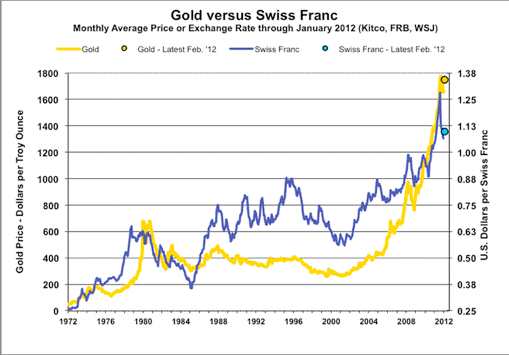Home › 6a) Gold & Monetary Metals › 6a.) GoldCore › Why Do Central Banks Want Higher Inflation?
Permanent link to this article: https://snbchf.com/2021/10/flood-why-central-banks-higher-inflation/
Receive a Daily Mail from this Blog
Live Currency Cross Rates
 On Swiss National Bank
On Swiss National Bank
-
SNB Sight Deposits: increased by 1.7 billion francs compared to the previous week
3 days ago -
2025-07-31 – Interim results of the Swiss National Bank as at 30 June 2025
2025-07-31 -
SNB Brings Back Zero Percent Interest Rates
2025-06-26 -
Hold-up sur l’eau potable (2/2) : la supercherie de « l’hydrogène vert ». Par Vincent Held
2025-06-24 -
2025-06-25 – Quarterly Bulletin 2/2025
2025-06-25
 Main SNB Background Info
Main SNB Background Info
-
SNB Sight Deposits: increased by 1.7 billion francs compared to the previous week
3 days ago -
The Secret History Of The Banking Crisis
2017-08-14 -
SNB Balance Sheet Now Over 100 percent GDP
2016-08-29 -
The relationship between CHF and gold
2016-07-23 -
CHF Price Movements: Correlations between CHF and the German Economy
2016-07-22
Featured and recent
-
Bitcoin, Dogecoin, Ethereum & Co. am Samstagnachmittag
-
 Bitcoin-Bullrun 2026: Krypto-Börse prognostiziert Kursziel von 170’000 Dollar
Bitcoin-Bullrun 2026: Krypto-Börse prognostiziert Kursziel von 170’000 Dollar -
 12-20-25 Why Balanced Portfolios Are Making a Comeback
12-20-25 Why Balanced Portfolios Are Making a Comeback -
 Risikomanagement beim Trading: Dein Schlüssel zum Erfolg
Risikomanagement beim Trading: Dein Schlüssel zum Erfolg -
 Warum Dein Depot keine Angst vor Trump haben muss
Warum Dein Depot keine Angst vor Trump haben muss -
 12-19-25 What Great Financial Planning Looks Like
12-19-25 What Great Financial Planning Looks Like -
 Are Gold’s Gains Signaling a Dramatic Paradigm Shift?
Are Gold’s Gains Signaling a Dramatic Paradigm Shift? -
 12-29-25 Fed Liquidity, Housing Myths & Market Risk
12-29-25 Fed Liquidity, Housing Myths & Market Risk -
Inflation and the Intergenerational Housing Rivalry
-
 Schweiz – Auswanderungsland für Deutsche? Erfahrungen, Volksabstimmungen, Russland, EU und NATO
Schweiz – Auswanderungsland für Deutsche? Erfahrungen, Volksabstimmungen, Russland, EU und NATO
More from this category
- Bitcoin, Dogecoin, Ethereum & Co. am Samstagnachmittag
20 Dec 2025
 Bitcoin-Bullrun 2026: Krypto-Börse prognostiziert Kursziel von 170’000 Dollar
Bitcoin-Bullrun 2026: Krypto-Börse prognostiziert Kursziel von 170’000 Dollar20 Dec 2025
- Inflation and the Intergenerational Housing Rivalry
19 Dec 2025
- Home Prices and Sales Fall. Can Sellers Count on Lower Interest Rates?
19 Dec 2025
- Inflation as a moral hazard
19 Dec 2025
 Nestlé allowed to continue French Perrier operations
Nestlé allowed to continue French Perrier operations19 Dec 2025
- Nagel on Reason
19 Dec 2025
- Why We Hate Thomas Hobbes
19 Dec 2025
 Truth or tale: Would inheritance taxes trigger a mass exodus of millionaires from Switzerland?
Truth or tale: Would inheritance taxes trigger a mass exodus of millionaires from Switzerland? 19 Dec 2025
 BLue Owl Roils The AI Narrative
BLue Owl Roils The AI Narrative19 Dec 2025
 What Inflation Alarmists Missed In Their Warnings
What Inflation Alarmists Missed In Their Warnings19 Dec 2025
 Reduced US tariffs ‘remain a burden’ for Swiss economy
Reduced US tariffs ‘remain a burden’ for Swiss economy19 Dec 2025
 Switzerland considers AI data ‘theft’ defence
Switzerland considers AI data ‘theft’ defence19 Dec 2025
- Protecting a Societal Cancer with a Web of Lies
19 Dec 2025
 Record number of guests in 2025: Swiss tourism boss
Record number of guests in 2025: Swiss tourism boss19 Dec 2025
- Party Over Principle: A Lesson from the Bloody Shirt Era
19 Dec 2025
- Inflation and the Intergenerational Housing Rivalry
18 Dec 2025
 UBS plans January job cuts: media report
UBS plans January job cuts: media report18 Dec 2025
- QJAE: Ulysses S. Grant and the Panic of 1873
18 Dec 2025
- November’s Weak Jobs Report Pushes the Fed Toward More Monetary Stimulus
18 Dec 2025












Why Do Central Banks Want Higher Inflation?
Published on October 23, 2021
Stephen Flood
My articles My videosMy books
Follow on:
Why do Central Banks want higher inflation?
The debt ceiling debate in U.S. Congress and related political nonsense brings even more to light the exponential growth in US federal government debt. US government debt has doubled in the 10 years since the last major debacle Congress created over raising the debt ceiling back 2011. The debate and Congress’s unwillingness to increase the limit back in August 2011 resulted in declining equity markets. It also resulted in Standard and Poor’s downgrading U.S. debt to AA+ from AAA!
The Political Standoff
The political standoff over raising this arbitrary restriction of how much debt the US can issue has become just another political lever in the dysfunctional Congress. As Secretary Yellen points out…
Borrowing Through The Good Times & Through Bad
The chart below shows the debt ceiling limit (red bar) and the Total debt issued (yellow bar). The debt issued line runs right with the debt limit bar. Both have seen exponential growth, approximately doubling every 10 years over the last 40 years.
Going back to Keynesian principles governments should borrow and increase spending during times of economic downturns (recessions) to help stabilize their economies. Then when the economy recovers the government can pay down the debt through increased revenues and less economic stabilizers – such as unemployment insurance, turning the deficit into a surplus. However, in recent times governments have increased debt levels in recessions and proceed to continue spending more than their revenues when the economy recovers. This leads to exponentially growing debt levels. As the chart below shows higher debt to GDP levels as debt grows faster than GDP. As the chart below shows – U.S. government debt has grown from 40% of GDP to over 125% of GDP.
US Government Debt Ceiling Limit Tracks Total Debt
And here in one chart is why Central Banks want higher inflation!
After all the economist Milton Friedman did say…
It is challenging to read any newspaper, social media feed, or participate in a discussion forum without the topic of inflation coming up these days.
And the extra money printed by central banks around the world for the last 40 years, which has also grown exponentially for the last 15 years is now creating that inflation. A country’s nominal GDP growth is a combination of real growth, meaning how much an economy increases output and then inflation added on top. On the chart below of US debt as a percent of GDP; we have added brackets of the average CPI (Consumer Price Inflation) rate for each of the changes in trend. Starting with the period of 1965 to 1980 CPI averaged 6.9% but has declined to average only 1.7% since 2010. Bottom line is that all else being equal, higher inflation will help reduce the massive government debt levels.
.
We leave you with a quote on inflation:
Full story here Are you the author?Follow on:
No related photos.
Tags: central-banks,Commentary,Economics,Featured,inflation,newsletter